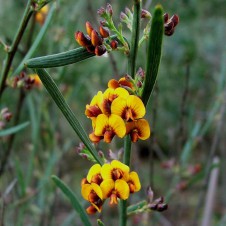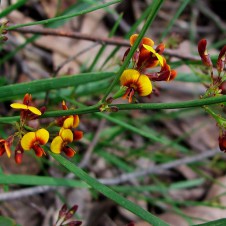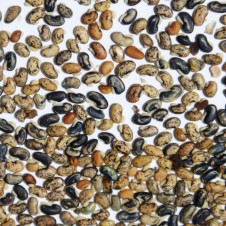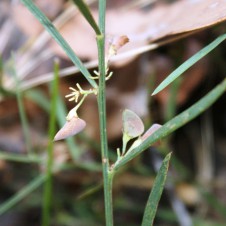General Description: An erect shrub, to 2 m tall, with narrow ‘leaves’ along angular branchlets, and short sprays of yellow and red-brown pea flowers in the axils. The leaves are Phyllodes and are dull green with prominent, longitudinal veins.
Flowers and Fruit: Yellow pea flowers, with red-brown near the centre, to 7 mm wide. Flowers from August to December. Fruit is a triangular pod, to 10 x 6 mm.
Site Preference and Tolerances: This species is both drought tolerant and frost hardy. It prefers to grow on shallow soils of drier hillsides. The Narrow-leaf Bitter-pea also prefers light, shallow stony and sandy soils. This species is common on lower and mid-slopes.
Life Span: Short-lived (less than 20 years)
Wildlife Value: Provides nectar and seeds for insects and birds and the foliage is often browsed.
Other Values and Uses: Can grow prolifically from seed particularly after fire and will also re-sprout after a fire. The Narrow-leaf Bitter-pea improves soil fertility and is adaptable to harsh sites so this makes it useful for general land protection works. This is an open shrub with attractive and profuse flowers suitable for gardens. Seed pods are an attractive shape and colour (red).
Other Scientific Names: Daviesia virgata, Daviesia corymbosa
Other Common Names: Slender-leaf Bitter-pea, Egg and Bacon
Germination Information: Need to break seed dormancy and heat treatment using just boiled water is usually used. I prefer to pour just boiled water over the seed and leave it for at least half an hour to ensure the seedcoat is cracked and the seed has taken in some water. In a germination experiment with this species the seed took 52 days to germinate.




